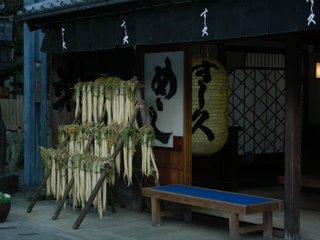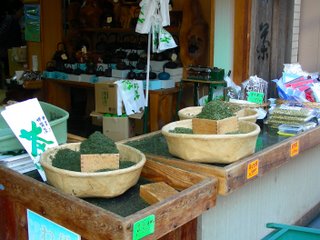Most of the inner shrines cannot be entered and photos are generally discouraged. So here is a borrowed aerial shot (which gives some sense of the layout and architecture of Ise).
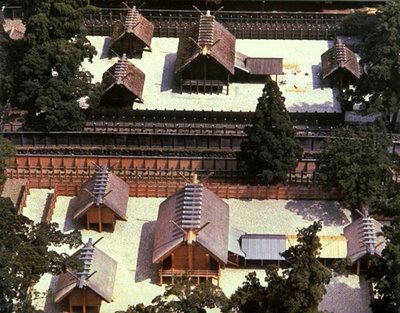
Along with Yuki (Makiko and Diasuke's four year old) we learned the proper way in which to make offerrings to the kami (gods and goddesses) of Ise. Because the kami are invisible or absent--always shrouded in kind of mystery--one approaches their shrine and then claps twice in order to capture their attention. Then one throws a coin into the offerring receptacle, and silently announces one's name and place of origin, bowing twice at the end.
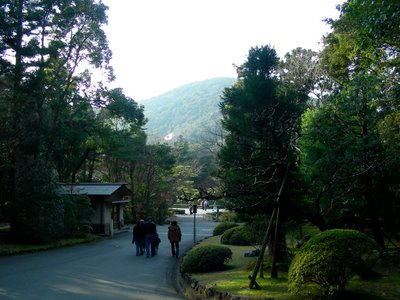
The beauty of Ise--and it is one of the most beautiful places I have visited in Japan--is all but impossible to capture in photographs. The grounds of the Shrine are vast and filled with hinoki (cedar) so old and enormous that they easily rival the giant redwoods of northern California. And although there gardens of moss and carefully pruned pines in the walk leading to the inner shrine, all attempts at human landscaping quickly dissapear into the wildness of the hills and rivers that surround Ise.

Here is a glimpse of one of the shrine buildings. In a custom unchanged for some 1200 years, every human-made structure on the grounds have been rebuilt every 20 years. The carpenters employed can use only primitive hand tools and materials are brought from every corner of the Japanese islands.
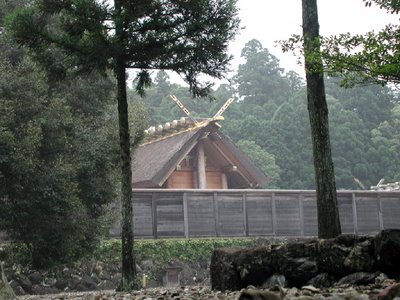 As the emporer and empress of Japan are said to descend from Amaterasu herself, they are the only two human persons allowed to enter the inner grounds of her shrine.
As the emporer and empress of Japan are said to descend from Amaterasu herself, they are the only two human persons allowed to enter the inner grounds of her shrine.
 Here the Japanese flag waves in the distance.
Here the Japanese flag waves in the distance.
 In Shintoism, the color white is sacred and therefore all manner of white creatures are kept on the grounds of the shrine--white horses, white fish and white hens and roosters.
In Shintoism, the color white is sacred and therefore all manner of white creatures are kept on the grounds of the shrine--white horses, white fish and white hens and roosters.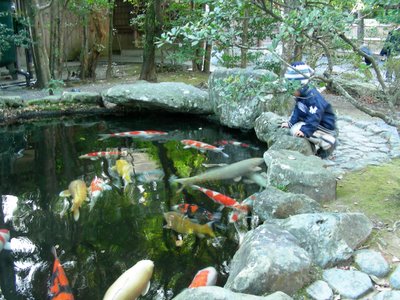
Yuki looking at some koi (not all were white!).
After leaving the SHrine itself, we walked the traditional path leading up to it--a narrow street filled with traditional merchants and their wares.
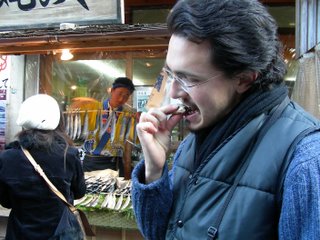 Christo sampling a kind of fish called sanma (strung up everywhere on lines along the road).
Christo sampling a kind of fish called sanma (strung up everywhere on lines along the road).
